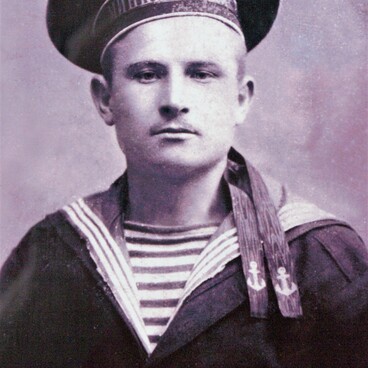The two-story brick building in the photograph is the first outpatient clinic and hospital for inpatient care in the village of Shebekino. Opened in 1902, it was funded by the Rebinders — entrepreneurs and factory owners. There were offices, an emergency room and a pharmacy on the ground floor, and there were apartments for medical personnel on the first floor.
Before the construction of the outpatient clinic the residents of Shebekino and the neighboring villages were treated by a district doctor, two paramedics and a midwife. And the first large medical institution on the territory of Shebekino district was the hospital in the village of Novaya Tavolzhanka. It was opened in 1883 by other local entrepreneurs — the owners of the Novotavolzhansky sugar factory the Botkins.
The Novotavolzhansky hospital had 12 beds and two wards: for men and women. In addition, there was a maternity room, an isolation ward, an operating room, a dressing room, a mortuary, a ward for contagious patients, as well as a pharmacy and an outpatient clinic. All the rooms and apartments of the medical staff were equipped with electricity, running water, baths and washbasins with cold and hot water, which was a rarity at the time.
The hospital staff consisted of several specialists: a doctor, a paramedic, a midwife and maids. Patients were admitted and treated free of charge, and medical care was provided not only to employees of Novotavolzhansky factory, but also to local residents. The Botkins spent about 15 thousand rubles a year on managing the hospital. In those days, that kind of money could buy 990 tons of straw or 37.5 tons of beef.
There were only five beds in the new hospital in Shebekino, but treatment and medicines were also free of charge for the Rebinder farm workers as well as for the residents of Shebekino volost. Four doctors worked in the outpatient clinic: chief physician Joseph Klausman, paramedic Terenty Gusakov, midwife Maria Gusakova, and nurse was E. Chuchkina, later Drobotova.
After the revolution, the outpatient clinic building became residential — the hospital was converted into apartments. Nicanor Serikov, chairman of the Shebekino District Executive Committee and a deputy of the Supreme Soviet of the USSR of the first convocation, lived in one of them before the war. In the 1960s the building housed the medical unit of the Shebekinsky chemical plant, and at the beginning of the 21st century — a branch of the Shebekino central district hospital.
Now the building of the Shebekino clinic is an object of cultural heritage, an architectural monument of the early 20th century.
Before the construction of the outpatient clinic the residents of Shebekino and the neighboring villages were treated by a district doctor, two paramedics and a midwife. And the first large medical institution on the territory of Shebekino district was the hospital in the village of Novaya Tavolzhanka. It was opened in 1883 by other local entrepreneurs — the owners of the Novotavolzhansky sugar factory the Botkins.
The Novotavolzhansky hospital had 12 beds and two wards: for men and women. In addition, there was a maternity room, an isolation ward, an operating room, a dressing room, a mortuary, a ward for contagious patients, as well as a pharmacy and an outpatient clinic. All the rooms and apartments of the medical staff were equipped with electricity, running water, baths and washbasins with cold and hot water, which was a rarity at the time.
The hospital staff consisted of several specialists: a doctor, a paramedic, a midwife and maids. Patients were admitted and treated free of charge, and medical care was provided not only to employees of Novotavolzhansky factory, but also to local residents. The Botkins spent about 15 thousand rubles a year on managing the hospital. In those days, that kind of money could buy 990 tons of straw or 37.5 tons of beef.
There were only five beds in the new hospital in Shebekino, but treatment and medicines were also free of charge for the Rebinder farm workers as well as for the residents of Shebekino volost. Four doctors worked in the outpatient clinic: chief physician Joseph Klausman, paramedic Terenty Gusakov, midwife Maria Gusakova, and nurse was E. Chuchkina, later Drobotova.
After the revolution, the outpatient clinic building became residential — the hospital was converted into apartments. Nicanor Serikov, chairman of the Shebekino District Executive Committee and a deputy of the Supreme Soviet of the USSR of the first convocation, lived in one of them before the war. In the 1960s the building housed the medical unit of the Shebekinsky chemical plant, and at the beginning of the 21st century — a branch of the Shebekino central district hospital.
Now the building of the Shebekino clinic is an object of cultural heritage, an architectural monument of the early 20th century.



